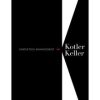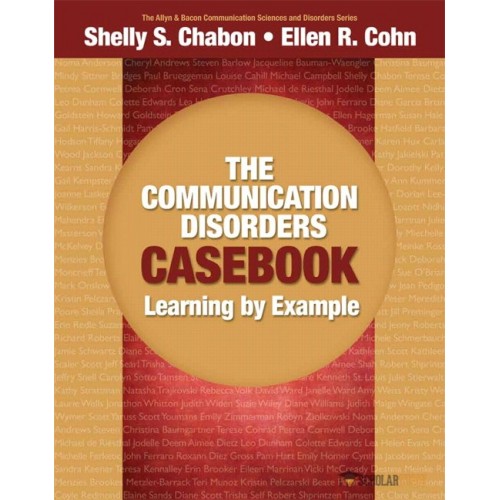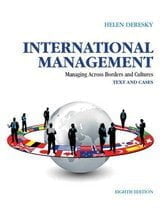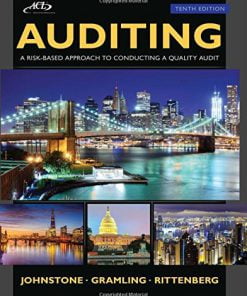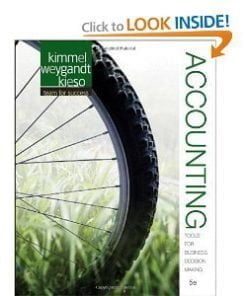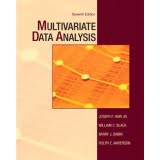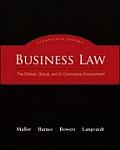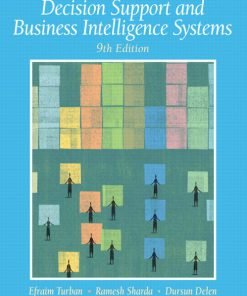Solution Manual for Communication Disorders Casebook, The: Learning by Example : 0205610129
$35.00 Original price was: $35.00.$26.50Current price is: $26.50.
Solution Manual for Communication Disorders Casebook, The: Learning by Example : 0205610129
This is completed downloadable of Solution Manual for Communication Disorders Casebook, The: Learning by Example : 0205610129
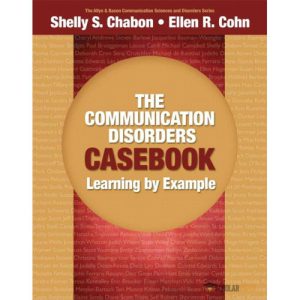
Product Details:
- ISBN-10 : 0205610129
- ISBN-13 : 978-0205610129
- Author: Shelly Chabon (Author), Ellen Cohn (Author)
Using a case-based approach that makes communication disorders more personal and relevant, the text is a comprehensive introduction to the subject that focuses on detail, interest, and practicality.
KEY TOPICS: Cases cover a wide range of communication disorders, a diverse set of clients of all ages, and a wide and varied arrary of clinical approaches and treatments.
MARKET: Written for introductory and intermediate courses in communication disorders such as Clinical Methods in Speech-Language Pathology or Evaluation and Treatment.
Table of Content:
PartI. Introduction — Ellen Cohn (University of Pittsburgh) and Shelly Chabon (Portland State University)
Part II: Cases: Infant or Toddler AUTISM: Developing a communication assessment & treatment plan for a toddler diagnosed with Autism Spectrum Disorders: Special considerations – Trisha Self & Terese Conrad (Wichita State University)
CLEFT PALATE: A toddler with cleft lip and palate: early therapy – Cynthia Jacobsen (Children’s Mercy Hospital and Clinics)
DEVELOPMENTAL DELAY: A toddler with delayed speech and developmental milestones – Carney Sotto (University of Cincinnati) and Erin Redle (Cincinnati Children’s Hospital Medical Center)
HEARING: An infant with a sensorineural hearing loss – Judith Widen, Sandra Keeneris, Teresa Kennalley, John Ferraro (University of Kansas Medical Center)
FRAGILE X SYNDROME: Jake: The move from early intervention to early childhood education for a child with Fragile X Syndrome – Gail Harris Schmidt (SaintXavierUniversity in Chicago)
PRENATAL ALCOHOL/DRUG EXPOSURE: Alcohol and/or prenatal drug exposure – Dorian Lee Wilkerson (Hampton University)
SICKLE CELL DISEASE: Auditory and neurocognitive impact of Sickle Cell Disease in early childhood – Diane Scott – (North Carolina Central University)
SWALLOWING: Oromotor entrainment therapy to develop feeding skills in the preterm infant – Steven Barlow, MeredithPoore, Emily Zimmerman (University of Kansas)
Part III: Cases: Preschool Child ANKLOGLOSSIA: To clip or not to clip…What is the answer? – Ann Kummer (Cincinnati Children’s Hospital Medical Center)
APRAXIA: The changing picture of Childhood Apraxia of Speech: From initial symptoms to diagnostic and therapeutic modifications – Jacqueline Bauman-Waengler (Marquette University) and Diane Garcia (University of Redlands)
AUGMENTATIVE COMMUNICATION: Pediatric AAC: Kelsey’s journey – Carla Wood Jackson (Florida State University)
AUTISM: Speech and language intervention for a child with autism; a relationship-based approach – Brookes Metzler (Kansas City Developmental Therapies)
BILINGUAL/LANGUAGE:
A preschool child who was internationally adopted – Jenny Roberts and Kathleen Scott (Hofstra University)
A bilingual preschool child – Noma Anderson (Florida International University), Shelly Chabon (Portland State University), Mariateresa Munoz (Florida International University)
CLEFT PALATE/SUBMUCOUS: Submucous cleft palate: A typical case of late diagnosis – Ann Kummer (Cincinnati Children’s Hospital Medical Center)
FLUENCY: A preschool child who stutters – Kristin Pelczarski & Scott Yaruss (University of Pittsburgh)
HEARING: Late-identification of hearing loss: A real-world story of how a child can fall through the cracks – Paul Brueggeman (University of South Dakota)
LANGUAGE/SLI: Preschool child with Specific Language Impairment – Tiffany Hogan (University of Arizona), Mindy Sittner (University of Kansas), Carole Wymer (University of Arizona), Rebecca Volk (University of Arizona)
PHONOLOGY/ARTICULATION: Complex disorder traits in a three year old boy with a severe speech sound disorder – Beate Peter (University of Washington, Seattle)
VISUAL IMPAIRMENT: Cognitive-linguistic intervention with a preschool child who has a visual impairment – Jean Pedigo (Children’s Center for the Visually Impaired)
Part IV: School Age Child APRAXIA: Childhood apraxia of speech: Differential diagnosis and evidence-based intervention – Kathy Jakielski (Augustana College in Rock Island)
ARTICULATION/PHONOLOGY: Of mouth and mind: An articulation and phonological disorder in a young school-aged child – Sue Hale and Lea Evans (Vanderbilt University)
AUDITORY PROCESSING: A school-age child with auditory processing disorder – Deborah Moncrieff (University of Pittsburgh/Communication Science & Disorders)
AUGMENTATIVE COMMUNICATION: Assessment and intervention for a school-age child with complex communication needs and physical impairments – Pam Hart (Rockhurst University) and Suzie Wiley (The Rehabilitation Institute of Kansas City)
AUTISM: A school aged child with an Autism Spectrum Disorder – Erin Brooker Lozott & Jamie Schwartz (University of Central Florida)
BILINGUAL/LANGUAGE: Cultural and linguistic diversity: A bilingual child with a speech and language disorder – Brian Goldstein (Temple University)
CLEFT PALATE: Blowing bubbles and rubbing lips: No cure in sight – Eileen Marrinan & Robert Shprintzen (Upstate Medical University)
DYSARTHRIA: Acquired childhood dysarthria in a school-aged child – Petrea Cornwell (University of Queensland and Princess Alexandra Hospital, Brisbane Australia) and Louise Cahill (QLD Paediatric Rehabilitation Unit, Brisbane, Australia)
FLUENCY: Syllable timed speech to treat stuttering in a school-aged child – Cheryl Andrews, Natasha Trajkovski, & Mark Onslow (The University of Sydney)
Treatment of cluttering in a school-aged child — Kathy Scaler Scott(International Cluttering Association), David Ward (University of Reading, UK), Kenneth St. Louis (West Virginia University)
HEARING: Using the multisensory syllabic unit approach to treat the fricative productions of a child with moderate-to-severe hearing loss – Sheila Pratt (University of Pittsburgh/ Geriatric Research Education and Clinical Center)
LANGUAGE: A school-age child with Specific Language Impairment: A case of continuity – Amy Weiss (University of Rhode Island)
LANGUAGE/BEHAVIORAL DISORDERS: A school age child with behavior disorders and language-learning disabilities: Applying contextualized written language and behavioral support intervention – Robyn Ziolkowski & Howard Goldstein (Ohio State University)
LITERACY: Treating reading and spelling skills in an elementary student – Deborah Cron & Julie Masterson (Missouri State University)
LITERACY/PHONOLOGY: Enhancing phonological and literary skills in twins with highly unintelligible speech – Kathy H. Strattman & Barbara W. Hodson (Wichita State University)
SWALLOWING: Dysphagia in the schools: A case study – Emily Homer & Dorothy Kelly (St. Tammany Parish Schools)
VOICE: Vocal cord dysfunction in a teenaged athlete – Gail Kempster (Rush University)
Part V: Cases: Adult APRAXIA: A novel combination approach to treating Apraxia of Speech – Julie Stierwalt & Joanne Lasker(Florida State University)
APHASIA: A case of Primary Progressive Aphasia in the later stages of the disease – Michael de Riesthal (Vanderbilt University School of Medicine)
Cognitive-communication impairments in a woman with right hemisphere disorder – Scott Youmans (Long Island University’s Brooklyn Campus)
A case of severe Wernicke’s receptive aphasia due to an underlying malignancy – Elaine Sands (Adelphi University)
APHASIA/AAC: Compensation for severe chronic aphasia using augmentative and alternative communication – Aimee Dietz, Miechelle McKelvey, Michele Schmerbauch, Kristy Weissling, Karen Hux (University of Nebraska-Lincoln)
APHASIA/MULTIPLE SCLEROSIS: Acute aphasia in
Multiple Sclerosis – Brooke Hatfield & Suzanne Redmond (National Rehabilitation Hospital)
ARTICULATION: Articulation errors secondary to dentures – Michelle Ferketic (Special Interest Divisions and International Liaison Programs of the American Speech-Language-Hearing Association)
AUTISM: An adult with high functioning autism: Language and communication challenges at work – Diane L. Williams (Duquesne University)
BILINGUAL/LANGUAGE: An adult who is a non-native speaker of English: High – Amee Shah (Cleveland State University)
An adult who is a non-native speaker of English: Low – Amee Shah (Cleveland State University)
DEMENTIA: An adult with dementia of the Alzheimer type screening assessment and cognitive linguistic interventions – Nidhi Mahendra (California State University East Bay)
FLUENCY: Treatment of stuttering for an adult – Sue Obrian (The University of Sydney), Mark Onslow (The University of Sydney), Ross Menzies (The University of Sydney), Tamsen St Clare (Westmead Hospital, Sydney)
HEARING: Adult audiologic rehabilitation: The case of the difficult patient? – Jill Preminger (University of Minnesota ) and Jonathan Whitton (University of Louisville School of Medicine)
Evaluation and management of vestibular problems and tinnitus following head trauma – Richard Roberts (Alabama Hearing & Balance Associates)
Sudden idiopathic SNHL: Autoimmune inner ear disease (AIED) – Laurie Wells(Associates in Acoustics, Inc.)
Noise induced hearing loss: A work related investigation — Deanna Meinke (University of Northern Colorado)
HEAD AND NECK CANCER: Management of a patient with advanced head and neck cancer – Roxann Diez Gross (University of Pittsburgh Medical Center)
LARYNGECTOMY: Mr. S: Successful voice restoration following total laryngectomy with TEP — Jodelle Deem & Ellen Hagerman (University of Kentucky)
SWALLOWING: Diagnosis and management of adult dysphagia – Christina Baumgartner (University of Kansas Hospital)
TRAUMATIC BRAIN INJURY: A holistic rehabilitation approach for a survivor of traumatic brain injury – Pat Kearns (Clinical Services at Quality Living, Inc), Janelle Ward (Clinical Services at Quality Living, Inc), Karen Hux(University of Nebraska — Lincoln), Dr. Snell (University of Nebraska — Lincoln)
VELOPHARYNGEAL DYSFUNCTION: Velopharyngeal dysfunction in an adolescent girl: Neurological, behavioral or anatomical in origin? – Jeff Searl (University of Kansas Medical Center)
VOICE: Voice therapy for an elementary school teacher with vocal fold nodules – Judy Wingate (University of Florida)
Finding Catherine’s voice – Leo Dunham(Hallmark Rehabilitation at Liberty Terrace Care Center, Liberty, MO)
Becoming who you are: A voice communication group program for a male to female transgender client – Vicki McCready, Michael Campbell, Sena Crutchley, Colette Edwards (University of North Carolina at Greensboro)
People Also Search:
communication disorders casebook, the: learning by example
communication disorders casebook, the: learning by example edition pdf
communication disorders casebook, the: learning by example solution manual download pdf
Related products
Solution Manual
Solution Manual
Auditing A Risk Based-Approach to Conducting a Quality Audit Johnstone 10th Edition Solutions Manual
Solution Manual
Solution manual for Accounting: Tools for Business Decision Making Kimmel Weygandt Kieso 5th Edition
Solution Manual
Solution Manual for Introduction to Electrodynamics, 4/E 4th
Solution Manual
Solution Manual
Solution Manual
Solution Manual for Data Structures and Other Objects Using C++, 4/E Michael Main, Walter Savitch


